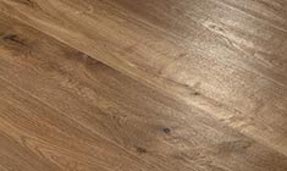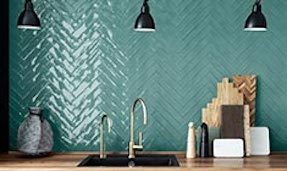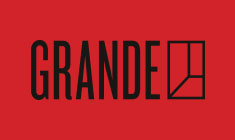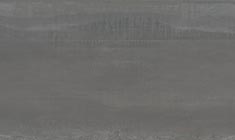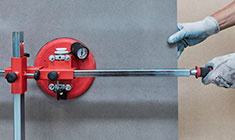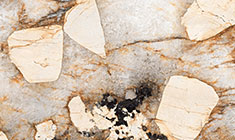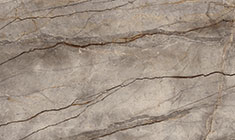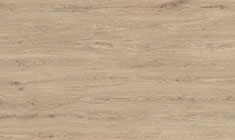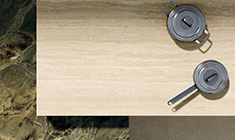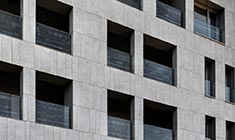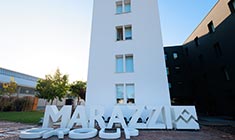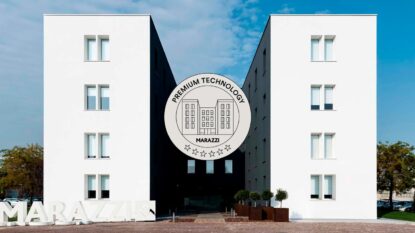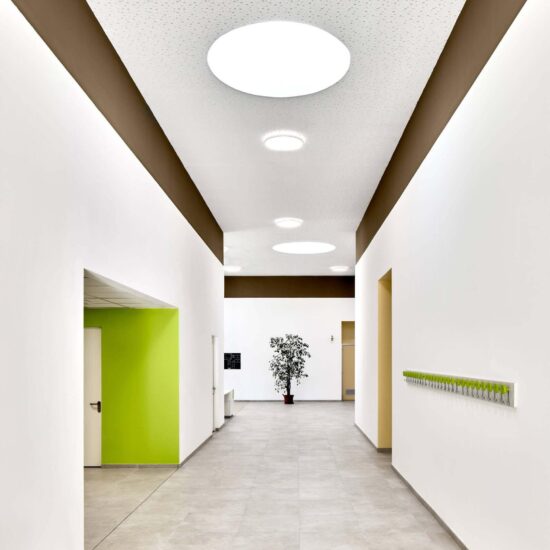A safe, comfortable school. Not just high-performing in energy terms but also attractive, sustainable and inclusive. We’re talking about Mate Engineering’s enlargement of the Middle School at Monastier di Treviso, a winner at the La Ceramica e il Progetto award, which makes wide use of porcelain stoneware
A modern, energy-efficient school, simple in its interior design but colourful and welcoming, with close links to the outdoors and nature. This is the new Middle School at Monastier di Treviso, designed by Mate Engineering, winner in the “Institutional – Urban Furnishing” category of the La Ceramica e il Progetto (Ceramic Tiles and Architecture) 2022 award, which selects the best architectural projects that give a central role to ceramics.
The scope of the project was the modernisation of a building dating from the early 20thC, which had little or no energy-efficiency and failed to meet today’s safety and earthquake resistance standards. Achievement of the high environmental sustainability standards set out in the Italian Ministry of Education, Universities and Research guidelines was fundamental to the project, which upgraded the school complex’s building envelope and systems to transform it into a “nearly zero-energy building” (nZEB). An earthquake-resistant extension 25% of the size of the existing building, free from architectural barriers and above all extremely low-energy, was added to the original complex..
The new extension’s design focused strongly on building automation, the use of sustainable materials and natural lighting. “The physical environmental of educational buildings,” architect Maurizio Pavani, founder of Mate Engineering, told us, “is crucial for pupils’ learning and mental and physical development: it influences their behaviour, encourages socialisation and may affect educational performance.” To ensure wellbeing and provide a good learning environment, Mate Engineering ensured thermal comfort, healthy air, and acoustic comfort with the aid of sound-absorbent suspended ceilings, and created large glazed areas to let in the sunlight, controlled both by projections on the building which supply shade and by motor-operated outdoor sun screens. “The floor-to-ceiling windows provide a continuous view of and access to the natural environment, which becomes an extension of the classrooms.”
It is important for a school to be open to the outside and become a focal point for the community. Therefore, instead of the usual hall, the entrance is an open “agora” and the corridors are not just access routes but places for socialising. The new classrooms can be furnished to suit the subject being taught: the desk layout can be varied from the usual rows to a rectangle, islands, a horseshoe, a spiral or an amphitheatre arrangement.
Widespread use was made of porcelain stoneware on the floors and, in the toilets, on the walls as well. “We chose this product,” Mr Pavani continued, “because it combines an elegant, gleaming appearance with functional factors of great importance for a school building, including durability, slip resistance and easy cleaning and care.” The Marazzi Stream collection (Ivory colour and 60×60 size), consisting of 40% recycled material, was used seamlessly throughout the interior, while Autonomy system porcelain stoneware was adopted to create tactile pathways for the blind and partially sighted, generating alert (start-end) codes and turning signs. Autonomy comprises tiles in 20×20 cm size with geometrical relief forms and colours (Panna for straight/Giallo for stop) compliant with European signage standards. The 30×30 cm size is also available for coding of straight pathways, so the two sizes can be combined to create tactile routes 40, 60 or 80 cm wide.
“Overall,” Mr Pavani concluded, “we were looking for a uniform indoor finish with no differentiation between the communal corridors and pathways and the classrooms. We also wanted to create comfortable, inclusive interiors, in warm colours and with a friendly feel”.
Ph. Federico Covre

